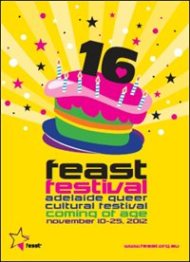El Topo was screened last week as part of Cinemathèque at the Mercury Cinema. This 1970 Mexican film, directed by the Chilean-French Alejandro Jodorowsky, was described in my brochure as “the ultimate Acid Western, the first midnight movie, a phenomenon of allusion and allegory, and one of the most important films of the Sixties counterculture.” Well. Considering that description, there was more plot, more violence and more torture than I expected, but a full fill of grand Western vistas and heavy symbolism.
Consider the first two scenes. In the first, a gunslinger takes his small son into the desert to bury his toys and declare himself a man. It’s visually striking, reaches for resonance and yet remains slightly absurd. In the second scene, the two ride through the aftermath of a massacre. Women and children lie dead but still bleeding, the men swing from nooses in the town church, and their animals have their guts spilled out. The sun beats down. It’s meant to be savage and it’s meant to motivate the gunslinger to moral action, but the lingering shots felt like torture voyeurism. Even hardened film-goers, such as my companion to the film, a fan of zombie films and Reservoir Dogs, found it hard to stomach. What has been seen cannot be unseen, after all.
The film follows the gunslinger (played by Jodorowsky) through various trials that may or may not lead towards sainthood. He must defeat the men who massacred the townsfolk. He must ride through the desert and face down four other master gunfighters. Then he is metaphorically reborn to help inbred villagers escape their underground prison. He is El Topo, “the mole”.
The landscapes are beautiful. The shot compositions are memorable (for good and ill). The dialogue is mystical and often beside the point. The disfigured and dwarf cast members are more human and less monstrous than the world they want to escape into. There is wanton eating of fruit. But the violence and torture left me thinking that this was a film I was glad to have seen, not a film I was glad to watch.
I was surprised to realise that El Topo is not actually that much of a departure from some other Westerns. The human blight amid starkly gorgeous scenery was not new. This world abandoned by God, without law, where only the gun matters – is this not a staple of the spaghetti western? Think of Tuco and Blondie in The Good, the Bad and the Ugly, who abandon each other in the desert, to crawl half-dead across lovingly-shot empty dunes. What hell is this? Push it just a little further and a bit sideways and you might get El Topo.











